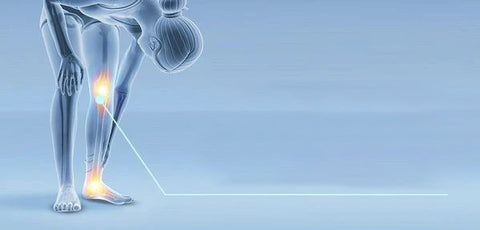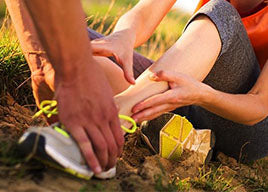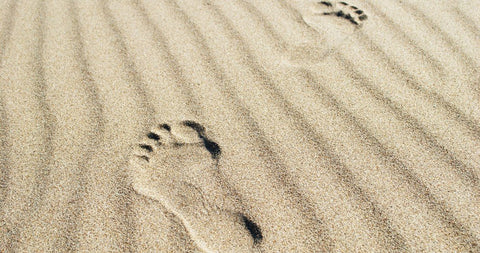
Sprains and injury
If you have a sprained ankle, you’re not alone as this is one of the most common types of muscles and ligament injuries doctors see. Alongside being painful and swollen, it may be hard to move the foot properly. The good news is that there is a lot of self-care advice out there to help, and most injuries can heal well by themselves.
What are sprains and injuries?
A sprain happens when you injure one or more of the ligaments around your joint. Ligaments are bands of fibrous tissue that connect one bone to another and support your joints. Ankle sprains occur when the foot is twisted beyond its normal motion, overextending or tearing the ligament in the process. Strains, also referred to as a pulled muscle or tendon, can also appear in the feet where the muscles or tendons have been overstretched or torn.
What are the symptom triggers?
Symptoms of a sprain or strain will depend on the severity of the injury, but can include:
- Pain and tenderness
- Swelling
- Bruising
- Restricted movement
- Difficulty putting weight on your foot
- Instability around the ankle
- Muscle spasms or cramping
What causes sprains and injuries?
Sprains and strains happen when a force is suddenly outside of the usual range of movement. This can overstretch and damage ligaments, tendons or muscles. Carrying out weight-bearing activities, physical activities beyond your ability, and failing to properly warm up before exercise can all increase the risk of damage.
Tips for avoiding and managing sprains and injuries?
You can self-manage most sprains and strains by taking a PRICE approach (Protect, Rest, Ice, Compression, Elevation) and avoiding HARM (Heat, Alcohol, Running, and Massage) in the first 48-72 hours after injury.
A PRICE approach:
- Protecting from further injury. Use a support sock or wear high-top footwear that supports the ankle.
- Resting the affected joint for 48-72 hours following the injury. Use crutches when walking may be necessary.
- Ice application on the injury site as soon as possible for 15-20 minutes every few hours, for up to three days. This is thought to reduce blood flow to the damaged ligament, and limit any pain, inflammation and bruising.
- Compressing the area with a bandage to limit swelling. Make sure the bandage isn’t too tight, you just want to apply mild pressure to the area.
- Elevating your injury to help reduce any swelling.
Avoid the following to help prevent HARM:
- Heat from hot baths, saunas and heat packs for 72 hours. Heat stimulates blood flow which increases bruising and inflammation.
- Alcohol as it can encourage bleeding, swelling and slow down healing time.
- Running or any other physical activity that could further damage the injury.
- Massage for 72 hours as it could increase bleeding and swelling. Gentle massage after this period may be soothing.
If the above advice and treatments don’t work or the pain or swelling gets worse, if you have a very high temperature or feel hot and shivery, please contact your local healthcare professional for medical advice.
You should go to A&E if you hear a crack at the time of injury, the injured body part is a different shape or if the injury is numb, discoloured or cold to touch.
To explore related products, click here.
UK/SC/0319/0049r

